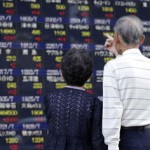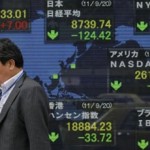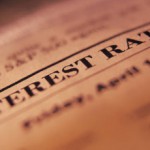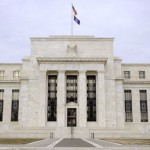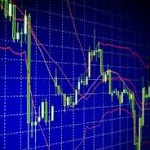U.S. Stocks Come Charging Back
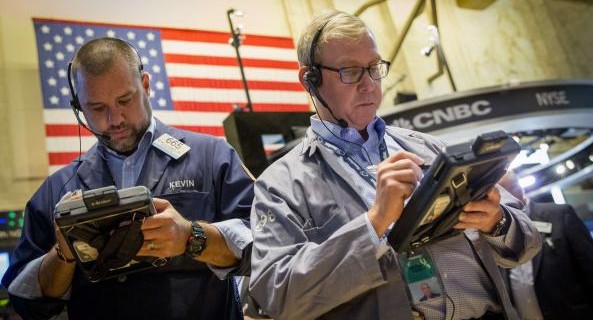
Six-day losing streak ends as Fed official calls case for September rate increase ‘less compelling’
Stocks snapped a six-day losing streak Wednesday, soaring by the highest percentage in nearly four years amid signs of strength in the U.S. economy and help from central bankers.
Federal Reserve Bank of New York President William Dudley said the case for a September rate increase has grown “less compelling” given the turmoil in markets around the world, easing concerns about a move that could put further stress on markets. Earlier in the day, stocks posted narrower losses in China after a move to cut interest rates and free banks to make more loans blunted a string of much sharper selloffs.

A positive reading on U.S. business investment further bolstered sentiment. Demand for big-ticket manufactured goods rose more than expected in July, and a reading for June was revised upward, a sign that U.S. growth remains healthy even as the expansion in China, the world’s second-largest economy, slows.
The Dow industrials surged 619.07 points, or 3.95%, to 16285.51 following the six-day rout that wiped out more than $2 trillion in market capitalization from U.S. stocks.
Despite the gains, few investors were ready to call an end to a selloff that has left the Dow down 8.6% on the year. The U.S. economy appears strong, but investors are concerned about weakness in China and the damage that is doing to other big developing countries such as Brazil, Turkey and Russia. The prospect that the Fed will lift interest rates from near zero when it meets in September is only adding to the uncertainty. The result is likely to be weeks of apprehension in which investors are glued to central-bank moves and economic indicators in the U.S. and China.

“I think everyone’s kind of waiting to see what happens and if there’s a next shoe to drop,” said Darren Wolfberg, head of U.S. cash equity trading at BNP Paribas.
Those keeping a close eye out include officials at the Fed, which cut its benchmark federal-funds rate to near zero in December 2008 and has held it there ever since to bolster the economy through the financial crisis, recession and fitful recovery. Central-bank officials have signaled they expect to raise it this year because the economy is strengthening but haven’t decided when to act. The prospect has rattled investors already worried about instability in markets amid China’s slowing growth.
The case for the Fed to raise short-term rates at its September meeting “seems less compelling to me than it did several weeks ago,” Mr. Dudley told reporters at an event in New York.
He also made clear a September move was still possible if markets stabilize and new data show the U.S. economy remains on track, adding that the case “could become more compelling by the time of the meeting as we get additional information.”
Mr. Dudley’s remarks were important because he is a close ally of Fed Chairwoman Janet Yellen. They contrasted with indications from several other Fed officials earlier this month that they were likely to support a rate increase in September. One of them, Atlanta Fed President Dennis Lockhart, appeared to retreat a bit Monday, when he said he still expected the Fed to move this year but didn’t say when.
Fed Vice Chairman Stanley Fischer, several regional Fed bank presidents and other central bankers from around the world are to attend a conference starting Thursday in Jackson Hole, Wyo., where the Fed’s plans will be a hot topic.
The rally came after markets steadied across the globe, with the notable exception of China. U.S. Treasurys and gold fell as investors’ anxiety eased. Some emerging-market currencies, like the Brazilian real, South African rand and Indian rupee, strengthened slightly against the dollar. The market’s “fear gauge,” the CBOE Volatility Index, slid but remained at elevated levels.
For much of the day, traders were bracing for a possible repeat of Tuesday’s trading, when a sharp early rally buckled in part due to a wave of selling by Main Street investors, swinging the Dow from a 442-point gain to a 205-point loss at the close.
Instead, stocks strengthened in the final hour of trading. Some investors said a silver lining to the recent selloff is that it has brought valuations for U.S. stocks down from lofty levels reached earlier this year. As of Tuesday’s close, the S&P 500 is trading at 16.6 times its trailing 12-months earnings, according to FactSet. That is higher than its 10-year average of 15.7 times earnings. As of Aug. 17, before the stock market’s recent tumble began, the index was trading at 18.7 times earnings.
Carlton Neel, a portfolio manager who oversees about $1.4 billion at Virtus Investment Partners, said he began buying shares in the consumer, auto and housing sectors.
“We started finding some things that we thought were at a good discount and started nibbling,” he said.
Advisory firm STA Wealth Management in Houston went the other way, taking advantage of Wednesday’s rally to sell some stocks in areas including industrials, materials and technology. President Michael Smith said the firm decided to trim stock exposure earlier this week and waited for a “relief rally” to act. He is concerned that central banks have only limited ability to support markets as they did in 2008.
Chinese markets had another volatile session Wednesday, as the Shanghai Composite Index swung between gains and losses before closing 1.3% lower. Some investors worry the People’s Bank of China’s moves won’t be enough to steady markets after the selloff of the past week.
The Shanghai Composite opened Thursday up 1.7%. Elsewhere early Thursday, Japan’s Nikkei 225 was up 2% and Australia’s S&P ASX 200 was up 1.6%.
“At the heart of investors’ concern is whether the pace of economic growth in China is slowing from the government’s target level,” said William Fong, investment director at Baring Asset Management.
Source: WSJ – U.S. Stocks Come Charging Back









